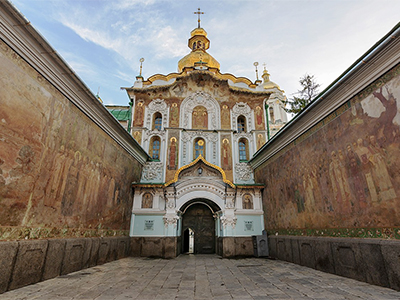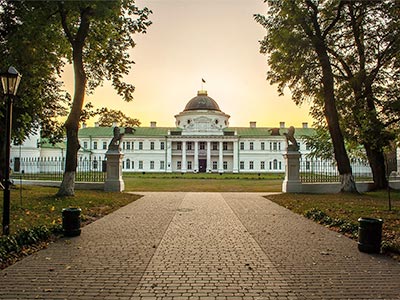Palanok Castle of Mukachevo
The Citadel of Princes Rakotsi – Fighters for independence of Hungary

Palanok Castle, the object of pride for the city of Mukachevo, is built on 68-meter hill lonely rising over the valley of the Latorytsa River. On the top of the hill there stands the oldest part of the castle formed in the 15th century called “upper castle”, while on the terraces beneath it there are “middle” and “lower” castles built in the middle of the 17th century. Bastions surround each castle, and there are fortified gates leading to the middle and lower castles, with bridges crossing wide moats. Mukachevo castle is an impregnable fortress, and not for once has it been the last unconquered place in the Transcarpathian land.
History of the fortress on the hill dates back to the 9th-10th centuries. Then these lands were part of the Kievan Rus, and the fortress secured the border from nomadic tribes of Ugrians (ancestors of the present- day Hungarians) and Polovets invasions. In the 11th century they seized the Transcarpathian territory, and that is when fortress in Mukachevo is first mentioned in a written document, the Hungarian chronicle “Deeds of Ugrian People”. Even then the fortress was im-pregnable, as it held out against both troops of Polovets khan Kutesk and the hordes of notorious Batyi Khan. The castle started to gain its modern looks thanks to the Podolian Prince Fedir Koriarovich. He built the part of the castle nowadays known as “upper castle”. It is then that cannons were installed, and an 85-meter well was dug in the castle court (in a body of volcanic rock, which is an undertaking even now!). Down to the level of 70 meters, the well had stairs cut in its rocky sides; according to a legend, there was a secret tunnel leading from the well to the city. The prince engirded the castle hill by a moat and an oak picket fence called a “palanok” that gave the name to the castle.
Koriatovich did not have heirs, and upon his death the castle changed hands for a long time until the end of the 16th century. Then voivoda Zhigmont Rakotsi, founder of one of the richest and most influential dynasties of Hungary, became its owner. Princes Rakotsi fought for Hungary’s independence from Austrian rulers, the Habsburgs, and Palanok has often been the center of combat area. For almost three years (1685-1688) it had been under siege of the Austrian army. It is interesting that the commander of the defenders was … a woman, Ilona Zrini. The favorite heroine of Mukachevo people, she became the symbol of courage and self-sacrifice, appearing in the bastions during bombardments and taking care of the wounded. In the times of the rule of her son, Ferenz the Second Rakotsi, Mukachevo Castle appeared in the very center of the national liberation uprising of Hungarians in 1703-1711.
Prince Koriatovich and the Devil
According to a legend, only with the help of dark powers did the people succeed in digging the well in the court of Mukachevo Castle. It is said that the devil agreed to help the prince in exchange for a bag of gold coins. But when it came to payment, the smart prince gave the devil a tiny bag with a single coin inside – they had not specified the size of the bag, after all.
Useful info:
– Schoenborn palace in the Carpathians
– Khotyn fortress
– interesting places of Transcarpathia
– Castle of Uzhgorod
Uzhgorod castle on the map
[wp_geo_map]
-
 27.02.2024
World of pysanka
Embark on a journey into the captivating world of Pysanka, the Ukrainian...
27.02.2024
World of pysanka
Embark on a journey into the captivating world of Pysanka, the Ukrainian...
-
 29.01.2024
Exploring the Treasures of Kyiv’s Lavra Monastery
In the heart of Kyiv lies the venerable Lavra Monastery, a testament...
29.01.2024
Exploring the Treasures of Kyiv’s Lavra Monastery
In the heart of Kyiv lies the venerable Lavra Monastery, a testament...
-
 13.01.2024
Kachanivka, Eden on Earth
Rich in history, it hosted renowned artists, notably poet Taras Shevchenko.
13.01.2024
Kachanivka, Eden on Earth
Rich in history, it hosted renowned artists, notably poet Taras Shevchenko.

